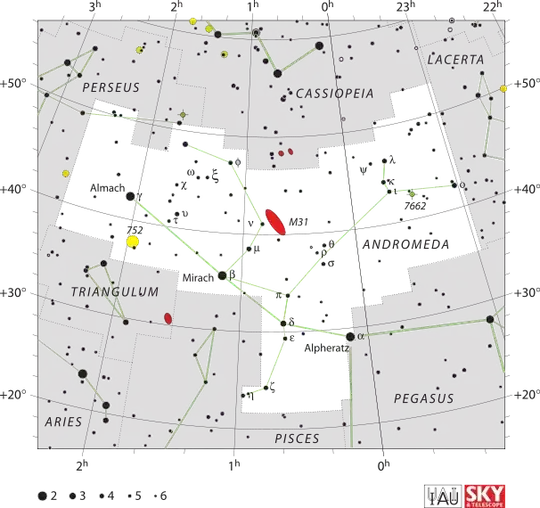If you have a properly aligned telescope with good setting circles, you can easily use the RA and Dec of the galaxy to locate it (or any other deep space object you have the coordinates for). However, many times you don't have those properly dialed in or you're using an alt-az telescope mount (like a Dobsonian telescope) and need another way to find your target.
Finding M31 by hand with the unaided eye is actually fairly easy. Here's how I do it and explain it to people.
This is the starfield in question (image lifted from the Andromeda Wikipedia article):

You start at her head ($\alpha$), move down to her neck ($\delta$ and $\pi$) and then down to her waist ($\beta$ and $\mu$). These stars are all easily visible even in a bright sky. Now starting at the brighter of those last two stars, $\beta$, you move to the fainter one, $\mu$, and then keep going on that same line a distance equal to the distance between the two stars (The separation is about 4-5 degrees on the sky). At that point you are sitting right on the core of the Andromeda galaxy. (You can readily see this on the star chart.)
If you're in a relatively dark sky, you'll be able to see the galaxy with your eyes (although it might take a bit of averted vision to do so). If you're doing the star hopping with binoculars or the finder scope of a larger telescope you should be able to see it easily enough. And it's quite easy to do this star hopping through the finder scope, I do it all the time. And that's all it really takes. As long as you can see the brighter stars in the constellation, you'll be able to locate the galaxy.

